Gael García Bernal (Guadalajara, Jalisco, 1978) was born into a family of actors and debuted on national television at age 11. After gaining popularity as a child actor, he went to London to study drama at the Central School of Speech and Drama, to later become one of the Mexican actors with the most international projection.
His appearance in the short film De tripas corazón, nominated for an Academy Award in 1996, marked the beginning of his film career. Then came feature films such as Amores perros (2000) and Y tu mamá también (2001), which also received nominations from the Academy.
Since then he has starred in over 30 films shot in countries such as France, Spain, United States, Chile and Cuba, among others, in which his performances have earned him awards that include an Ariel for Best Actor for film Amores perros, in 2001; the Male Revelation Marcello Mastroianni Award —shared with actor Diego Luna— for his work in Y tu mamá también; the Revelation of the Year Award for his interpretation of song Quiero que me quieras at the Oye Awards; a Silver Mayahuel in 2009 for his career achievements; and Best Performance by an Actor in a Television Series, Musical or Comedy for his role in Mozart in the Jungle, in 2016.
He is also a producer, scriptwriter and director and is also known for his activism. He was appointed ambassador of the Latino Commission on AIDS campaign in the city of New York for his work and support to the community.

Juan García Esquivel (1918-2002) was a music arranger, pianist and composer; pioneer of electronic music in Latin America and considered the father of lounge, although his style, which he called “sonoramic music”, is better known as space-age pop.
He was born in Tampico, Tamaulipas, but he preferred to say that he was born on Mars. Better known as Esquivel, ever since he was a boy he became interested in music, which he self-taught, revealing himself rapidly as a prodigy. At age 14 he was a pianist at the XEW, where he began to compose and created his own orchestra with which he performed radio musical arrangements and advertising jingles.
In the 1950s he went to New York, where he recorded Four Corners of the World (1958) under the RCA Victor label. In the United States he devoted himself to recording experimental albums while making musical arrangements for films, TV series and programs such as The Flintstones, The Bionic Woman and Charlie’s Angels, among others, which became classics of popular culture. Although he never won a Grammy, he was nominated six times for compositions like “Mucha muchacha” or “Mini skirt”.
Admired by Henry Mancini, Frank Sinatra and Walt Disney, Esquivel enjoys prestige as one of the best musicians of his time; currently respected as a cult artist, whose influence has been admitted by artists such as Matt Groening, Bono and Quentin Tarantino.
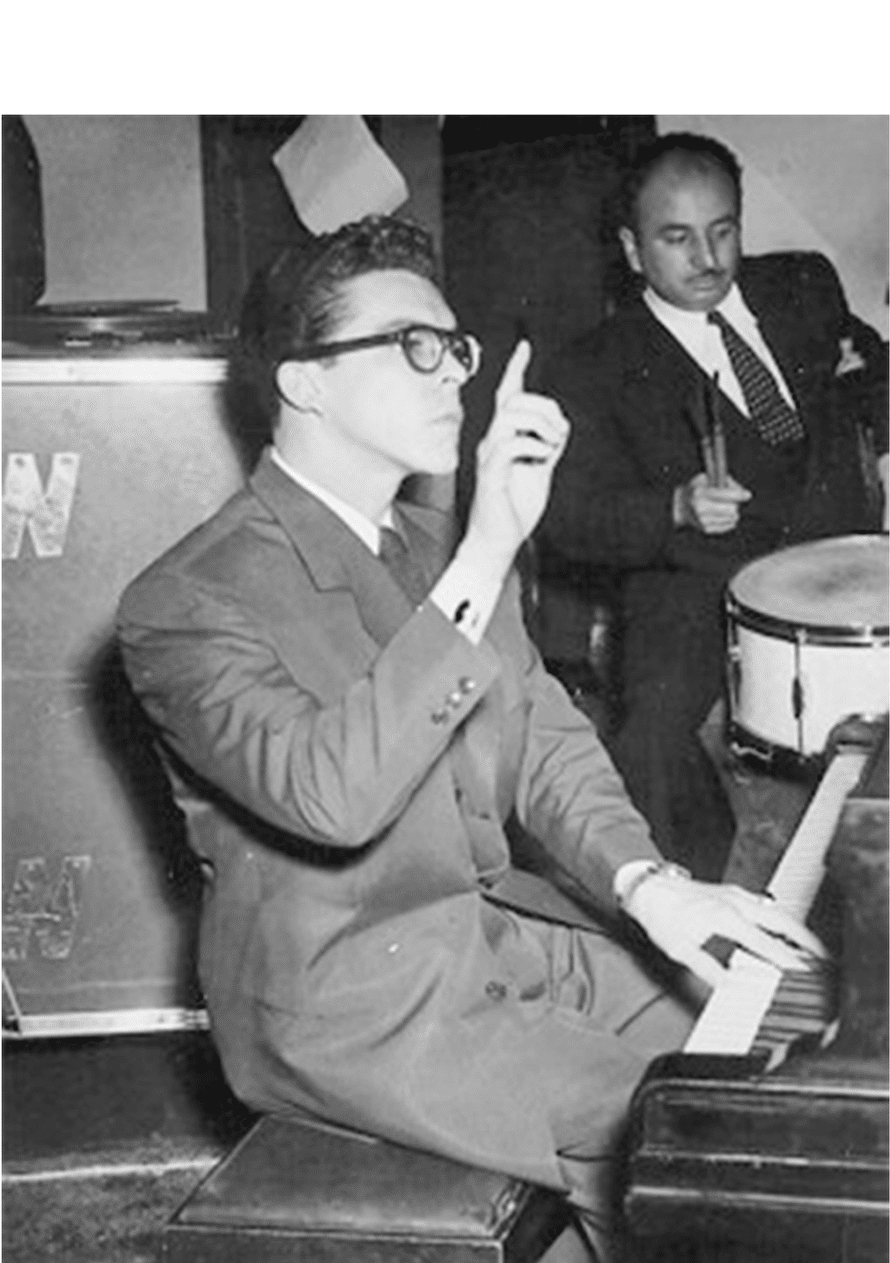
It is here [in Mexico], where I have written my books, where I have raised my sons, and where I have planted my trees.21
Gabriel García Márquez
Although he was born in Colombia, Gabriel García Márquez (1927-2014) considered Mexico as his “other distinct homeland”. Exiled for political reasons and with twenty dollars in his pocket, he moved to Mexico City in 1961 with his family. Among the streets of this “luciferian city” he found shelter and worked as a journalist, advertising editor, editor and screenwriter.
While driving to Acapulco, the first sentence of One Hundred Years of Solitude came to his mind. “It was so mature”, he recalled, “that I could have dictated the first chapter, word by word, to a typist, right there on the highway to Cuernavaca”.22
Gabo, as he was known, hurried the family vacation to return to home, quit his jobs and sat down to write for eighteen months, while Mercedes, his wife, supported the household. This is how the novel that gave him universal fame and profiled him to receive the Nobel Prize for Literature in 1982 was born. That same year, the Mexican government distinguished him with the Order of the Aztec Eagle.
The father of magical realism died at his home in the Pedregal neighborhood and was seen off with a tribute at the Fine Arts Palace, an honor that only the most illustrious Mexicans receive.
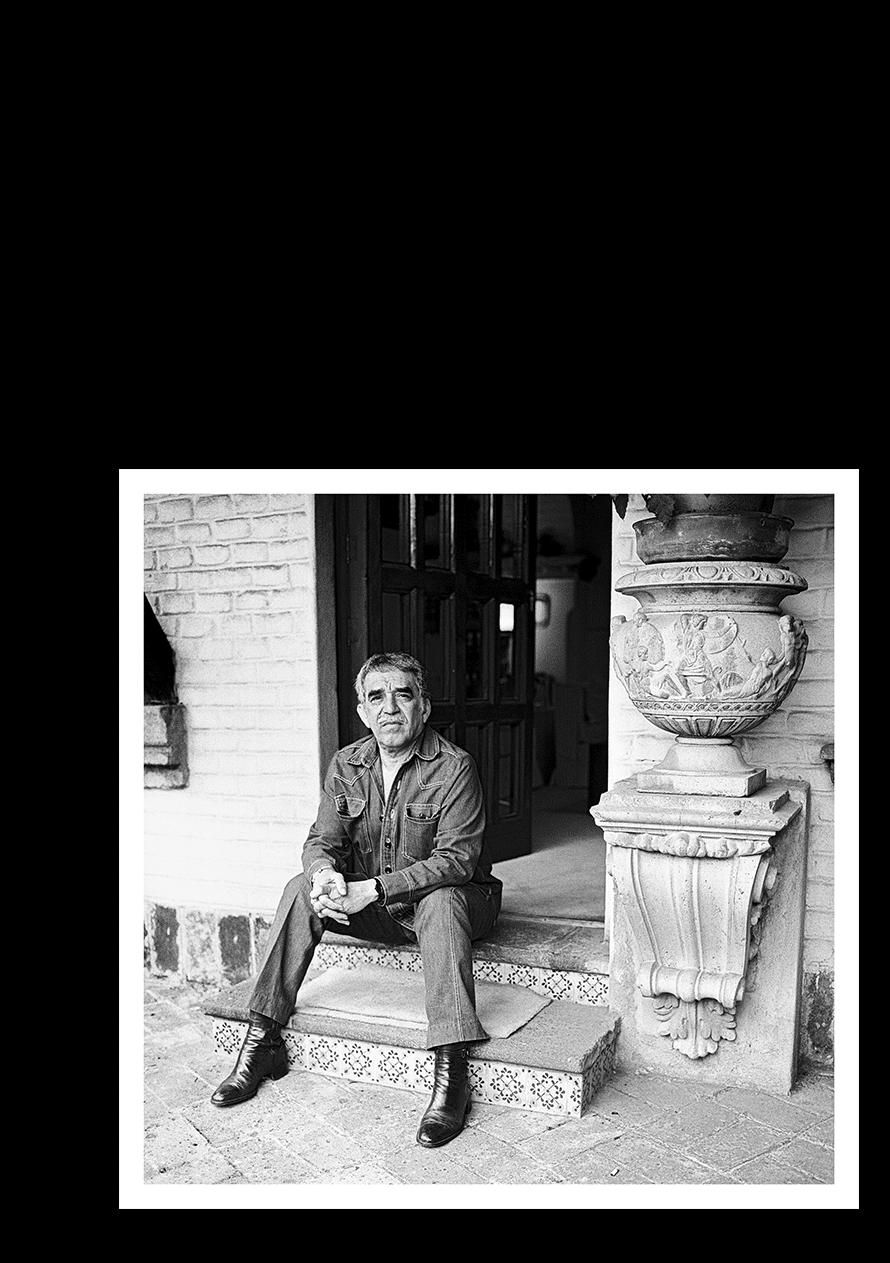
In 1982, ambassador emeritus Alfonso García Robles (Zamora de Hidalgo, 1911-Mexico City, 1991) became the first Mexican to receive a Nobel Prize when he was distinguished in the Peace category along with Swedish diplomat Alva Myrdal, for his remarkable contributions on informing the world opinion about armament issues.
Being president of the Preparatory Commission for the Denuclearization of Latin America, he was instrumental in achieving the signature, in 1967, of the Treaty for the Prohibition of Nuclear Weapons in Latin America and the Caribbean, which forbids the development, acquisition, testing and deployment of weapons, proclaiming this entire region as a nuclear-weapon-free zone, for which he is known as “the father of the Tlatelolco Treaty”. This initiative represented a decisive step for the preservation of peace and international stability.
The standard established by the Tlatelolco Treaty was gradually adopted in other regions of the world, until in 2017 a global commitment for nuclear disarmament was achieved.
Doctor García Robles received awards from ten Latin American, European, African and Asian countries, as well as numerous honorary positions both in this country and abroad.

When he was five years old, Eduardo García left his native town in Guanajuato to cross the border into the United States with his family. Emulating hundreds of Mexicans of humble origin, he worked illegally in the harvesting of crops. Each harvest gave him the opportunity to learn about seasons and ingredients, unaware that he was approaching his destiny: becoming a chef.
At age 14 he got a job as a dishwasher at a restaurant in Atlanta. He did not have basic studies or speak English, but that did not stop him from learning to cook. “I learned by myself”, he says, “smelling, watching, understanding, tasting and searching”. His eagerness for survival and self-improvement was greater than all his obstacles, but after a series of ups and downs —including a stint in jail and facing two deportations— he returned to Mexico.
Without knowing what would become of his future, he typed on his computer’s search engine: “Best chef in Mexico” and located Enrique Olvera, who shortly after would become his boss, teacher and guide, and with whom he reconnected with Mexican cuisine.
For five years he was head chef at Pujol and later became the chef owner of restaurant Máximo Bistrot, consolidating his career as one of the most renowned chefs in the country.

Elena Garro (Puebla, Puebla, 1916-Cuernavaca, Morelos, 1998) defined herself as “the restless particle” and so she was: dancer, choreographer, playwright, poet, narrator, screenwriter, journalist, activist... She was never still and she left in her wake a trail of words, which compose one of the most important works of Hispanic American literature.
She is considered the second most important woman in Mexican literature after Sor Juana; precursor of magical realism, which she perfected in her novel Recollections of Things to Come, published in 1963, but written and read a decade earlier in literary circles to which authors such as Gabriel García Márquez belonged.
Her narrative, object of many analyzes and studies, introduced new ways of conceiving time within the story, and her plays such as Felipe Ángeles, Un hogar sólido or El árbol, are considered renovated pieces of Mexican dramaturgy. In journalism she found a potent weapon used in the defense of leader Rubén Jaramillo and the peasant cause.
Unfortunately, her work was overshadowed for a long time by slander, persecution and exile, after an agitated 1968 during which she was openly against the authoritarian and critical regime in opposition to the comfort of intellectual circles.
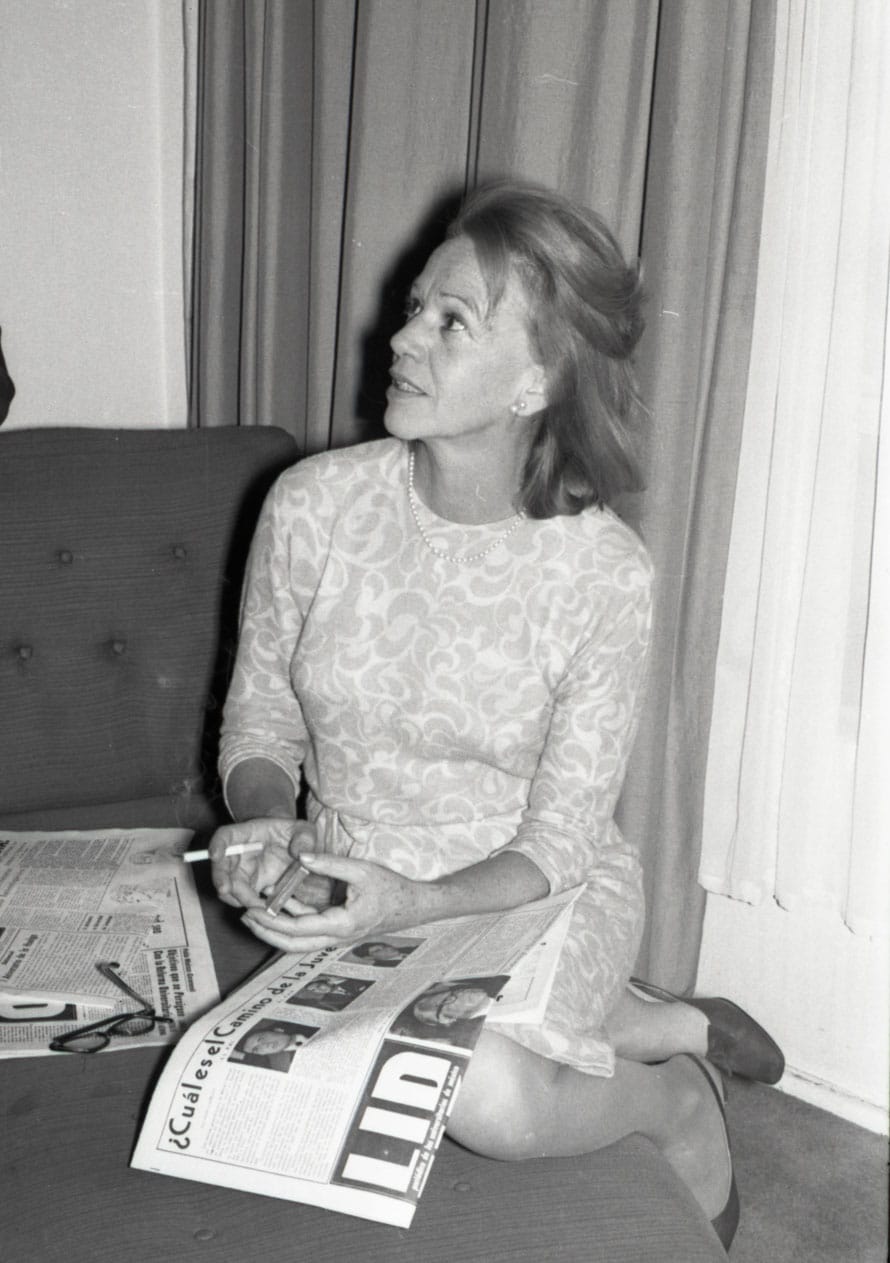
Cooking is more than the food of the earth. It is an act of creativity, a fact loaded with symbolism of the highest cultural significance.23
Conservatory of Mexican Gastronomic Culture
The set of ingredients, techniques and recipes that make up Mexican cuisine is an ancestral, popular and current legacy that guards our roots and history and determines our identity. This heritage has its origins in the pre-Hispanic period —with the triad made up by maize, beans and chili— and was turned on its head with the conquest, when Old World ingredients and techniques were incorporated, enriching our cuisine without altering its character or authenticity.
The culinary culture is part of a complex cultural model that includes everything from agrarian activities to ritual practices, as well as customs and forms of community behavior to reach the stoves of each home, where techniques, preparation and respect for food are preserved.
In recognition of this richness, in 2010 Mexican traditional cuisine was declared Intangible Cultural Heritage of Humanity by UNESCO, taking as reference the Michoacán paradigm. This was achieved thanks to the work of a group of cooks, researchers, promoters and historians through the Conservatory of Mexican Gastronomic Culture.
Standing out in this project is the work of cook Juana Bravo Lázaro and writer, journalist and diplomat, Gloria López Morales, who stated that the inscription “is not an exercise of collective pride”,24 but a fundamental step that will allow the rescue, safeguard and promotion of our gastronomy.
This example constitutes a model that should be copied in different centers of culinary irradiation in our country, such as Oaxaca, Yucatán, Puebla, Guerrero and Veracruz, in order to protect the vast culinary heritage of each of these regions.

Architect, sculptor, painter, poet and art historian, Mathias Goeritz (Gdańsk, 1915-Mexico City, 1990) is one of the main figures of Mexican plastic art modernization. He is credited along with Luis Barragán for the invention of “emotional architecture”, a movement that emerged in Mexico during the 20th century that promotes the use of color, lighting, water and vegetation to create harmony.
He fled Germany in 1936 after the establishment of National Socialism, partly because of his Jewish origin, and partly because this ideology considered that modern artists represented a danger for the government.
He arrived in Mexico in 1949, as a visiting scholar of the recently founded School of Architecture of the University of Guadalajara, Jalisco. There he created a design workshop in which he shared the teachings of the Bauhaus. His workshops in this and other universities had an important influence on contemporary art.
Among his most significant works are El Museo Experimental El Eco (1952) in Mexico City; and the Torres de Satélite (1958), created in collaboration with Luis Barragán and painter Jesús Reyes Ferreira. On the occasion of the 1968 Olympic Games, he promoted the creation of the Friendship Route, an urban sculptural circuit, located in Mexico City, which integrates the work of more than a dozen foreign sculptors who represented several countries.
Goeritz’s creative evolution can be seen in a body that, in addition to his architectural work, includes drawings, models, photographs, sculptures and paintings, as well as his literary search. He wrote poetry and the Emotional Architecture Manifesto published in 1953, among other things.



With a career of over 70 years, Teodoro González de León (Mexico City, 1926-2016) —architect, urban planner, painter and sculptor— managed to consolidate himself as an eminence, master and maker of contemporary Mexican architecture.
In his works he developed a language that combined the inspiration of pre-Hispanic patterns and modernity. He chose concrete as his main material and achieved a minimalist style that was known as “Teodocreto”.
The “Concrete Poet” was a great promoter of architecture understood as a cultural phenomenon. Among his most representative works are the Embassy of Mexico in Brasilia (1972); El Colegio de México (1975); the Museo Tamayo Arte Contem-poráneo (1981); the remodeling and expansion of the National Conservatory of Music (1994); the Torre Arcos Bosques Corporativo, better known as “El Pantalón” (1996); the Embassy of Mexico in Berlin (2001); and the University Museum of Contemporary Art, (2008), several of them made in collaboration with important architects such as Francisco Serrano and Abraham Zabludovsky.
It is also important to focus on his facet as a painter, where the influence of his teacher Le Corbusier was notable, presenting a strong geometric inclination in vivid and clear colors that translate the three-dimensional world of architecture into the canvas.
Awards and recognitions received in Mexico and other countries include the National Arts Award (1982); the Great Prize of the Biennial of Sofia, Bulgaria (1988); and the Prize of the Biennial of Buenos Aires, Argentina (1991).
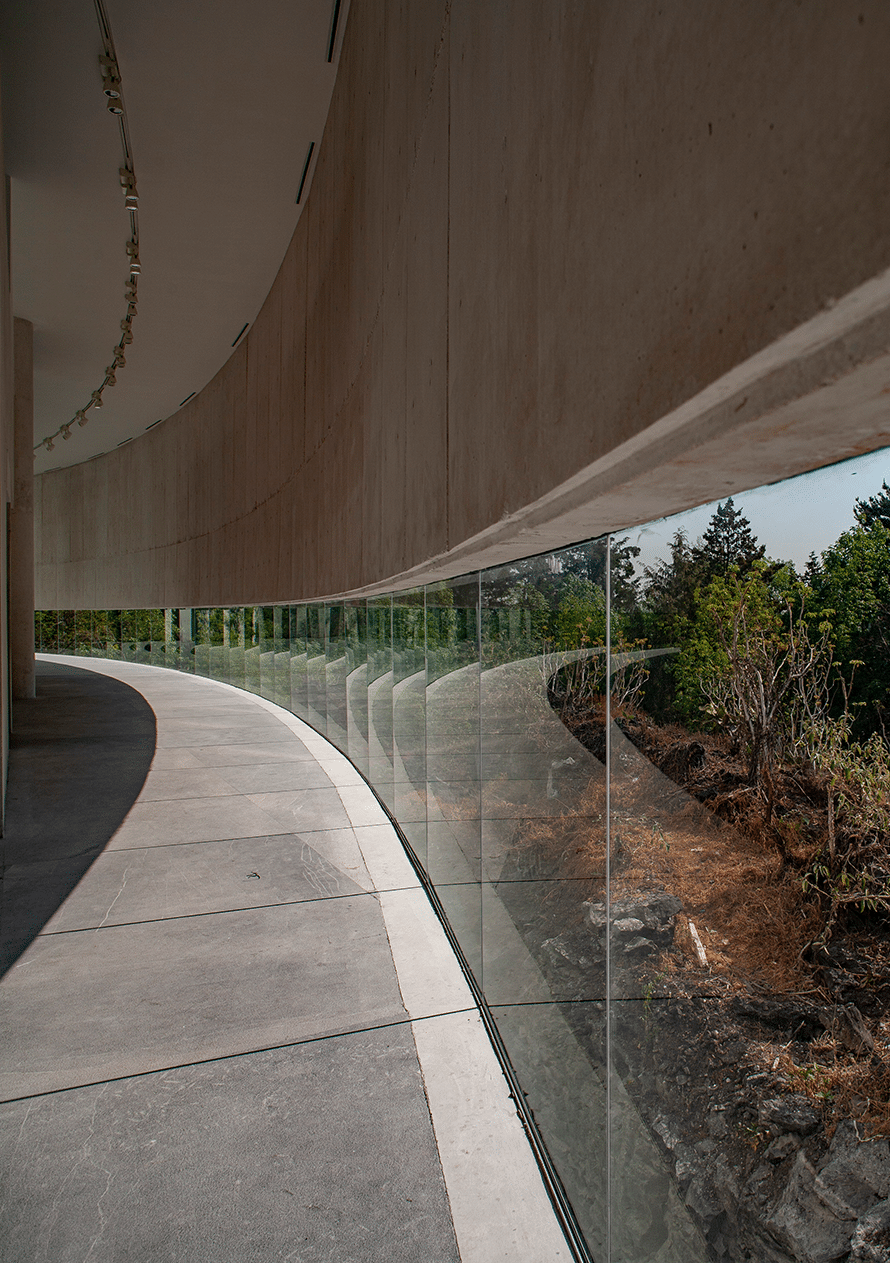


With his debut film Amores perros (2000), Alejandro González Iñárritu (Mexico City, 1963) surprised both locals and foreigners by revealing himself as a director capable of portraying the harshness and drama of Mexican reality.
Until then, his career had only been linked to commercial radio and advertising campaigns. Although he kept his distance from the intellectual film circle, he had been preparing to make his big debut for years.
The film, with a plot of intertwined stories —written by Guillermo Arriaga— won eleven Ariel awards, a BAFTA Award and the Cannes Film Festival Critics’ Award, as well as being nominated for an Academy Award for Best Foreign Film.
This success launched “El Negro” —as his friends know him— into international stardom. He began working with the Hollywood elite and stood out as a “director of few films, but many good choices”.
With films like Babel (2005), Biutiful (2010), Birdman (2014), The Revenant (2015), and Flesh and Sand (2017) he has been collecting awards and recognition within the industry and has taken home five Academy Awards, four Golden Globes and three BAFTA Awards, among others. In 2019 he was president of the Jury of the Cannes Film Festival, becoming the second Latin American to have the honor.

There are many creators —from all periods and artistic disciplines— whose names have been inextricably linked to one of his works, to the iconic piece of his legacy. That is the case of José Gorostiza (Villahermosa, Tabasco, 1901-Mexico City, 1973) and his inexhaustible poem Death Without End, considered an essential composition of literature in Castilian language.
Death Without End was published in 1939 and had an immediate impact on the world of literature, where it was described as “one of the greatest achievements of contemporary poetry”. It is an extensive work, consisting of ten parts where he pours the distress of the individual being in a song of philosophical searches, dedicated equally to existence and to destruction. Its complexity, which continues to be the subject of extensive studies, lies in the fact that it functions at multiple levels, which the poet elaborated with the idea, he said, of “doing something as someone constructing a building, with the criteria of an architect or as the composer who intends to create a symphony”.
Gorostiza belongs to the generation of the Contemporaries, a legion of poets and critics essential for the development of Mexican literature in the 20th century, an example of the “New Mexicans” convinced that Mexicanness was not at odds with universality.

The cochineal is a scale parasitic insect that lives on cacti and prickly pears. It produces a carmine red pigment when crushed, which, among other things, changed the history of world art.
Upon their arrival in the new lands, Hernán Cortés and the conquerors discovered that the large markets of Tenochtitlán offered abundant textiles, ceremonial garments and ceramics dyed a deep red color that they had never seen before. The natives called it nocheztli —prickly pear blood—, which they also used as an insect repellent and to soothe migraines.
This pigment traveled from Mexico to Europe and East Asia in 1523, becoming the third export product of the New Spain, after gold and silver. The most sophisticated dyers in Europe adopted cochineal and used it to color their finest textiles, used to clothe kings and cardinals, since its pigment was ten times more powerful than St. John’s blood dye and produced three times as much per ounce of Armenian cochineal. Painters such as Tintoretto, Diego Velázquez, Anthony van Dick, Nicolas Poussin, Paul Gauguin, Auguste Renoir and Vincent van Gogh used it in their works.


María Grever (León, Guanajuato, 1884-New York, United States, 1951), composer and orchestra conductor, holds the distinction of being the first Mexican woman to achieve professional success in both popular and concert music.
She studied poetry, singing and various musical instruments in Mexico, Spain and France, where she took classes with Claude Debussy. Her talent was ahead of her time. Her first song, “A una ola” —which she composed at age 18— sold more than three million copies. Later she moved to New York, where she became obsessed with promoting Mexican music and talent.
She met tenor José Mojica, who described that on his arrival in New York he had met many Mexicans looking for an opportunity as opera singers, but most of them returned to Mexico without having achieved their goal. However, he was lucky to run into María, for whom impossible was not an option. The composer found a way to sneak into the offices of those who eventually represented her.
Years later, Mojica —by then famous— recorded “Júrame”, a song that represented the composer’s international projection. She was the author of more than 800 songs, including “Cuando vuelva a tu lado” and “Muñequita linda”, in addition to pieces for concerts and films.
María Grever is known for having a fundamental role in opening up the borders for Mexican musicians and performers.


Silvia Gruner (Mexico City, 1959) is a multidisciplinary artist whose work, of performative roots, alternates video art, photography, installation and Super-8 film. She studied Plastic Arts at the Massachusetts College of Art in Boston, and at the Betzalel Academy of Art and Design of Jerusalem.
Throughout more than three decades of work she has focused her practice on a poetic exploration of the body-identity relationship, which seeks to confront the traditional role played by different artifacts or environments in the collective imaginary based on the body, insisting on the private and collective character of its relationship with the world.
Her work has been shown in museums and galleries around the world, of which the most remarkable are the Hispanic Society of New York; the Museo Amparo of Puebla, Mexico; the Museo Nacional Centro de Arte Reina Sofía, in Madrid; the Museum of Contemporary Art San Diego; the Centro de Arte Contemporáneo Wilfredo Lam, in Havana; the Museo del Barrio, in New York; and the Second Biennial in Johannesburg, South Africa, among others.
Guacamole is a sauce prepared with ripe, crushed avocados that can be served alone or with a mixture of green chili, tomato, onion and coriander —sometimes a few drops of lime juice are added to stop the fruit’s oxidation. It is a classic in Mexican cuisine that is consumed in almost the entire world.
Its origin dates back to pre-Hispanic times and its name comes from the Nahuatl ahuacamolli, which combines the words ahuacatl (avocado or testicles) and molli (sauce).
In Mexico it is served as a side dish or sauce in any type of taco or quesadilla; it is also eaten as a snack, accompanied with tortilla chips. There are regional variants where aromatic herbs are added to the mixture; fruits like peach, grape or pomegranate, or insects like stink bugs or grasshoppers.
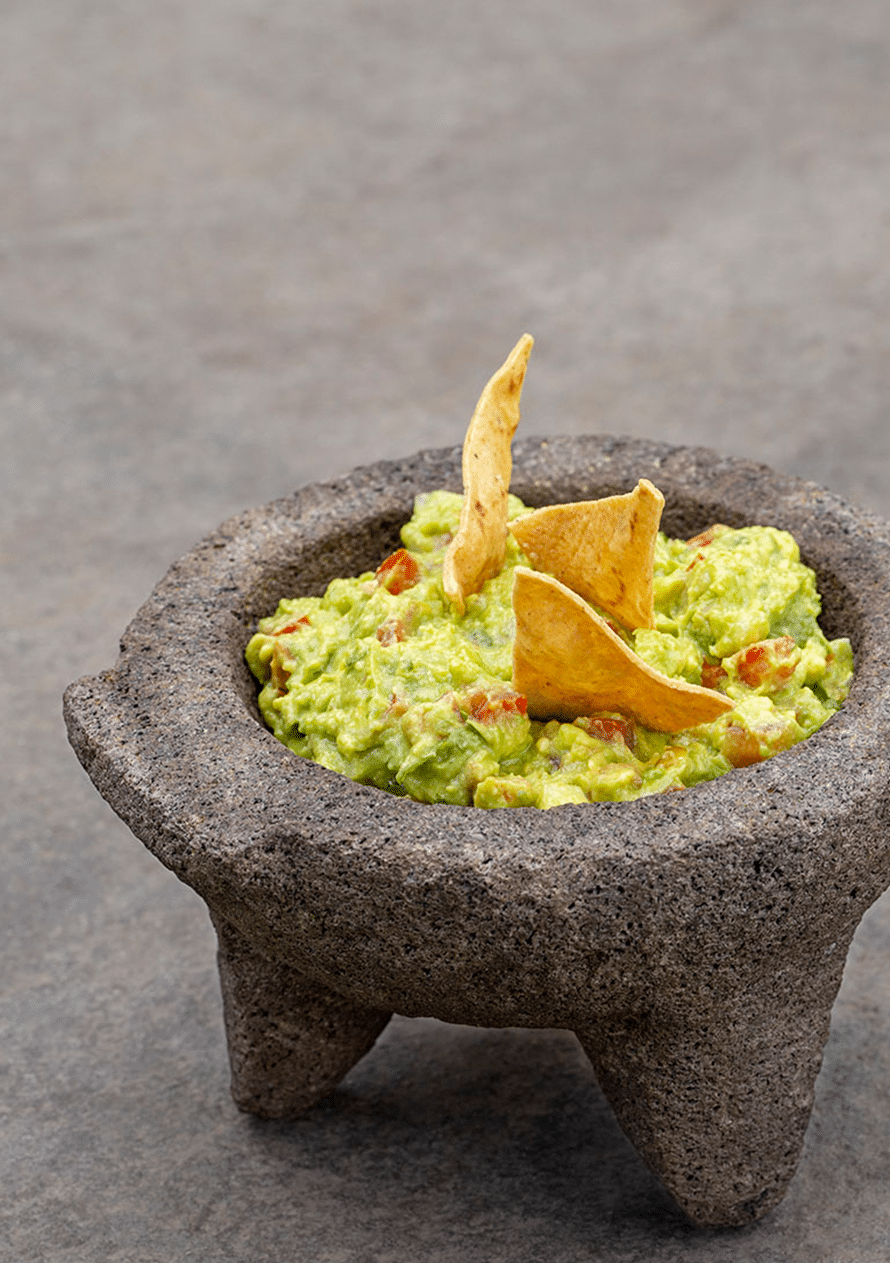
Known as guajolote, totol, totole, pipíla and cócono, this bird is one of the greatest contributions of Mexico to world cuisine. Its name in Spanish comes from the Nahuatl hueyxolotl, which means “big and monstrous”.
After the conquest, turkey was triumphantly brought to Europe, displacing the peacock in the great royal feasts. It became the favorite of Henry VIII of England and Charles IX of France, who chose it as the main course for his wedding. In the Old Continent it was considered a luxury food until the 19th century.
With the passage of time, turkey took over the main role in different celebrations around the world, such as Christmas and Thanksgiving.

At the 2004 Olympic Games in Athens, sprinter Ana Gabriela Guevara (Nogales, Sonora, 1977) became the first woman in the history of Mexico to win an Olympic medal in the 400-meter dash. Few times an athlete’s performance captivated the country in such a way, paralyzing all activity to witness the Olympic final.
Ever since she was a child, Ana had her heart set on sports. Before making an incursion in athletics, she practiced basketball for several years, until she won first place in 1996 in the 400 and 800-meter dash at the National Youth Olympiad in Mexico, a feat she achieved despite having almost no experience in track competitions. In 1997 she began her formal training in athletics under the supervision of Raúl Barreda.
After countless medals obtained in her approximately six years as a high-performance athlete, she became the strongest athlete in the 400-meter dash at the International Association of Athletic Federations (IAAF) classification, surpassing competitors with many more years of running experience covering that distance.
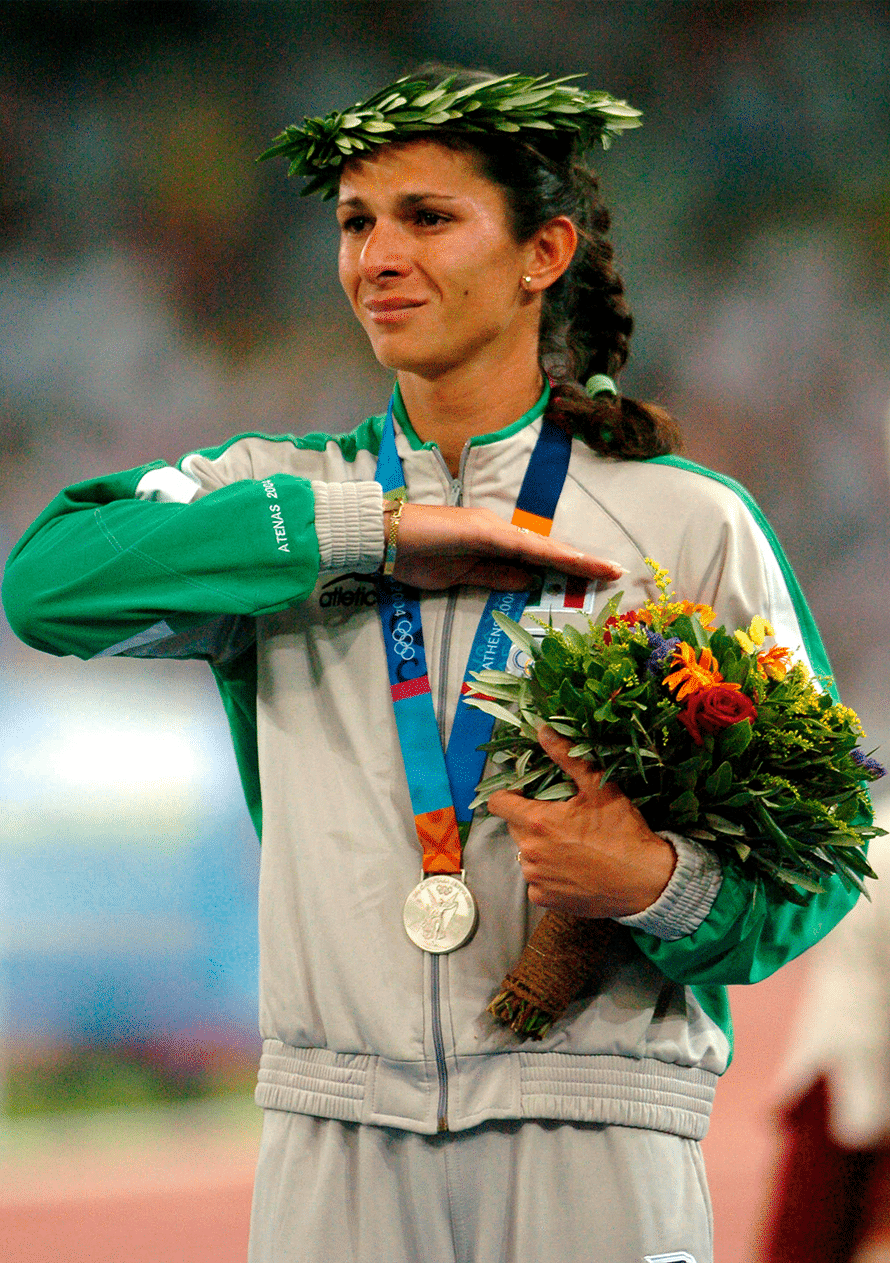
Martín Luis Guzmán (Chihuahua, Chihuahua, 1887-Mexico City, 1976), witness and participant of the Revolution, occupies an important place among chroniclers of the transformation of Mexico during the 20th century. His work influenced the construction of historical narrative and development of contemporary national literature.
Member of Pancho Villa’s troops, politician, journalist and public official, his nature was that of a man of action who only entered into literature when exile took him away from his other tasks.
During his exile in the United States and Spain, he wrote La querella de México (1915) —which spearheaded other texts that question the condition of Mexicans, whose pinnacle is The Labyrinth of Solitude by Octavio Paz—, The Eagle and the Serpent (1928), The Shadow of the Strongman /(1929), and Memoirs of Pancho Villa (1951).
According to writer Juan Villoro, The Shadow of the Strongman is an “inexhaustible and tragically current”25 novel, considered by Federico Campbell as the masterpiece on the criminalization of the Mexican state.


